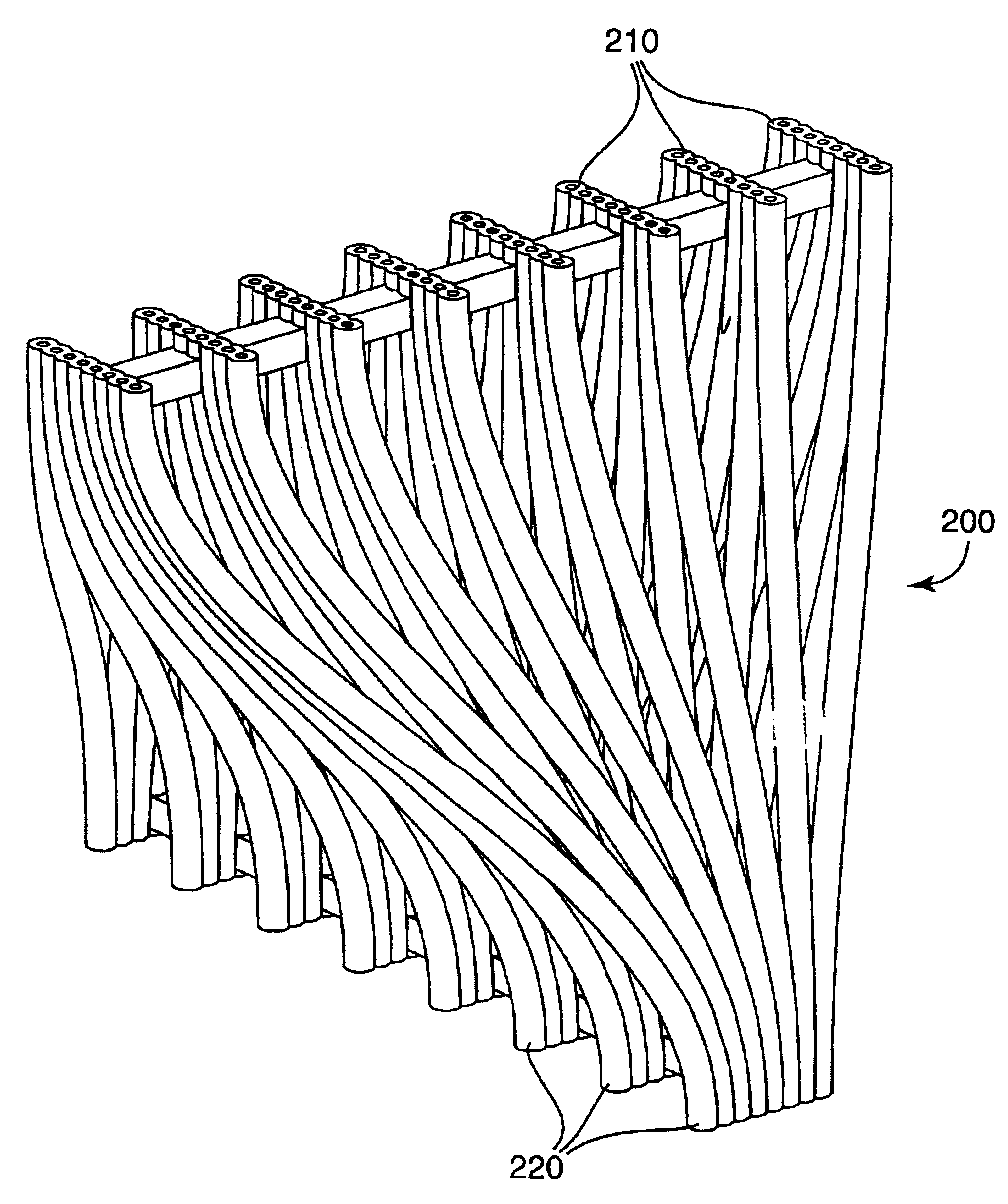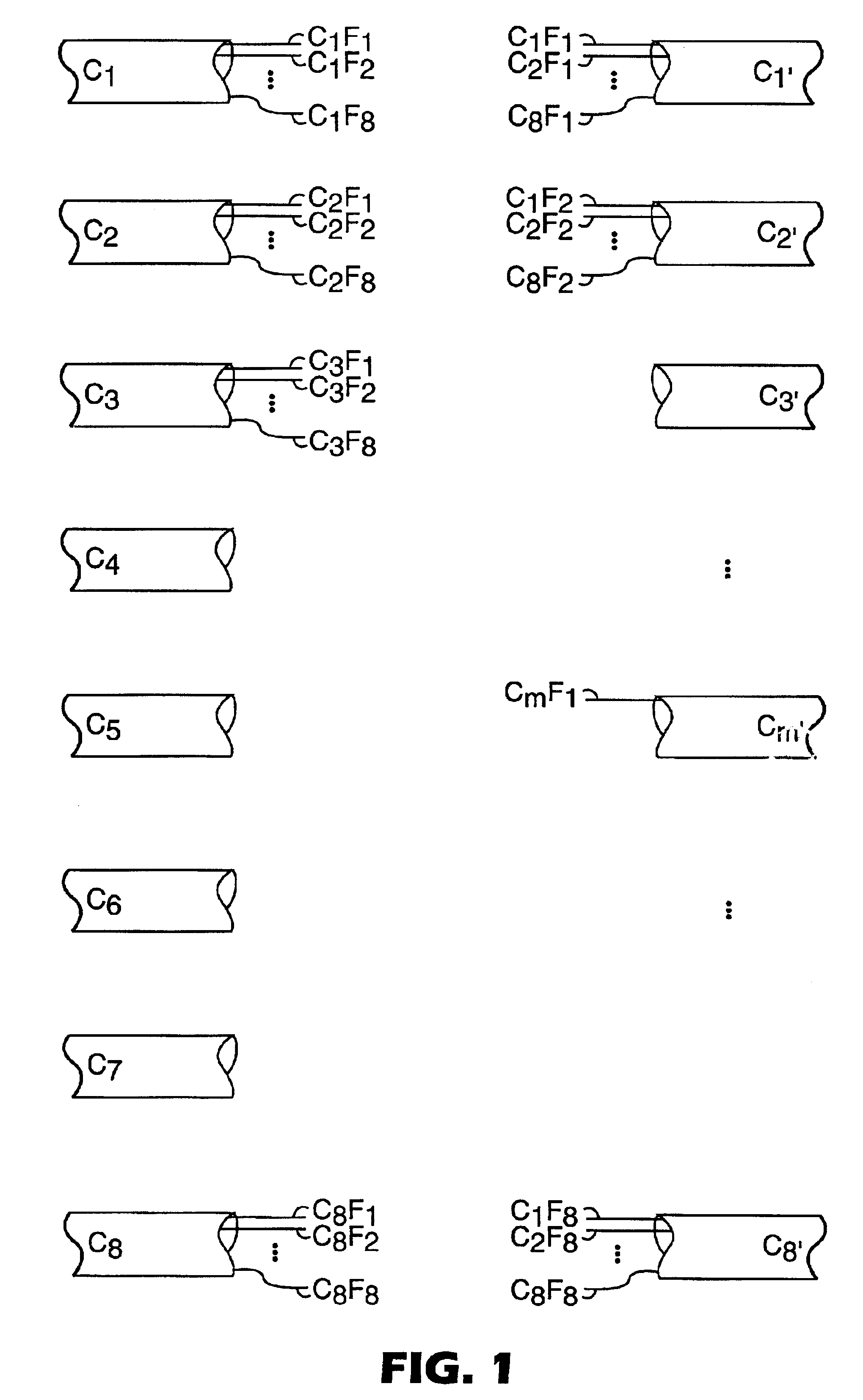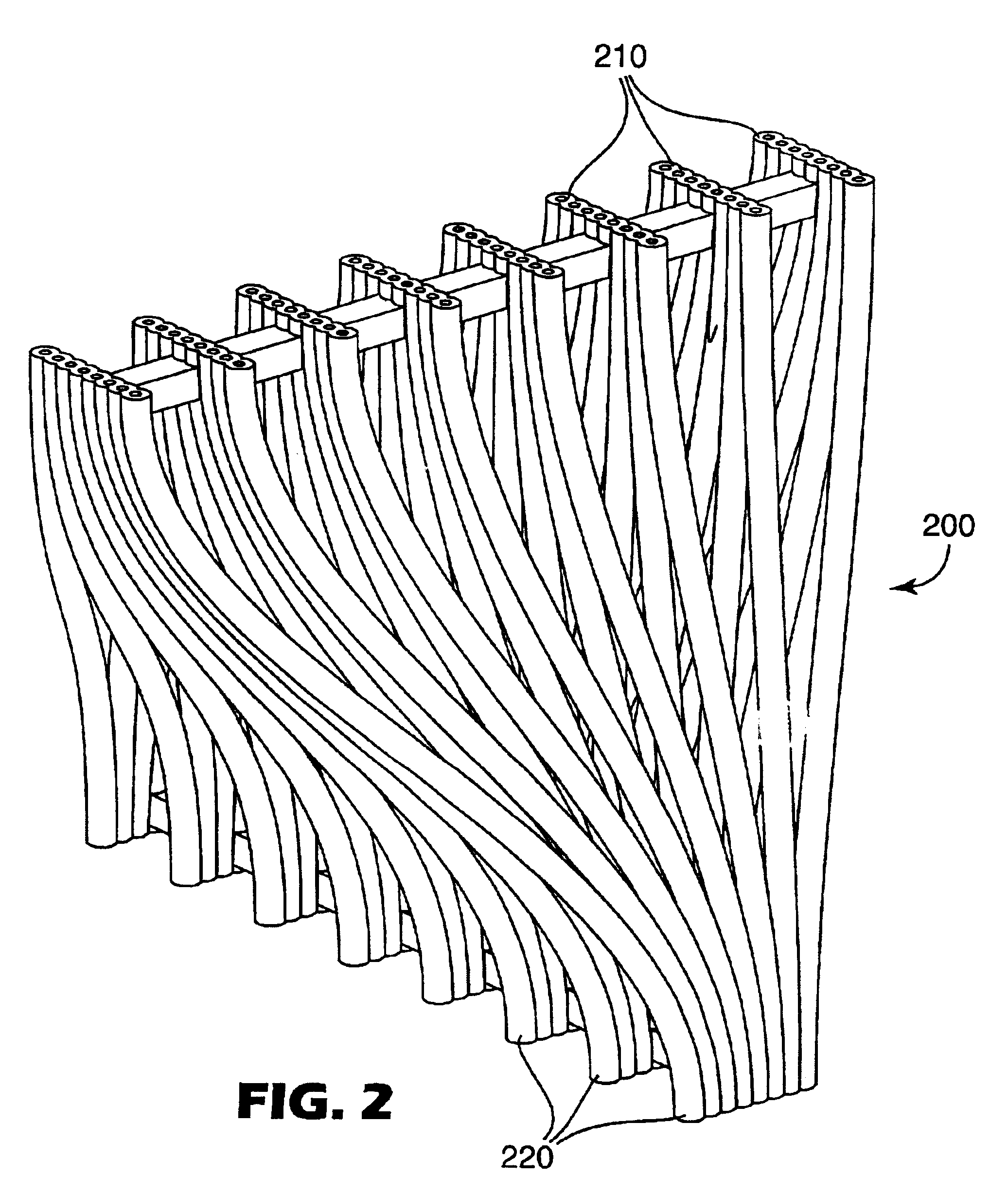Three dimensional optical circuits
a three-dimensional optical circuit and optical circuit technology, applied in the direction of instruments, bundled fibre light guides, fibre mechanical structures, etc., can solve the problems of circuits that cannot be readily manufactured using conventional molding or forming techniques, and achieve the effects of eliminating optical signal losses, reducing optical signal loss, and being readily manufactured
- Summary
- Abstract
- Description
- Claims
- Application Information
AI Technical Summary
Benefits of technology
Problems solved by technology
Method used
Image
Examples
Embodiment Construction
Referring now to the Figures, and in particular to FIGS. 2-6, there is disclosed a number of embodiments or variations constructed in accordance with the present invention for providing an optical manifold which may be incorporated into a three dimensional optical circuit such as a shuffle. As used herein, the term “optical manifold” shall refer to a component of a three dimensional optical circuit which provides a number of passageways for connecting a set of input openings to a set of output openings and for receiving a plurality of optical fibers in a first ordered arrangement at the input and outputting the plurality of fibers in a second ordered arrangement at the exit. As used in regard to the openings of an optical manifold, the term “ordered arrangement” refers not to the actual spatial relationship or location of one hole relative to another, but rather to the relationship of an input opening to an output opening.
By way of example only, an optical manifold for carrying out ...
PUM
 Login to View More
Login to View More Abstract
Description
Claims
Application Information
 Login to View More
Login to View More - R&D
- Intellectual Property
- Life Sciences
- Materials
- Tech Scout
- Unparalleled Data Quality
- Higher Quality Content
- 60% Fewer Hallucinations
Browse by: Latest US Patents, China's latest patents, Technical Efficacy Thesaurus, Application Domain, Technology Topic, Popular Technical Reports.
© 2025 PatSnap. All rights reserved.Legal|Privacy policy|Modern Slavery Act Transparency Statement|Sitemap|About US| Contact US: help@patsnap.com



